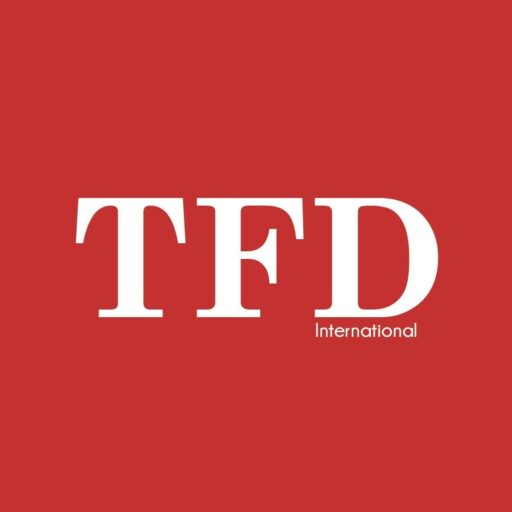KARACHI: In a time of global uncertainty and economic contraction across emerging markets, Pakistan’s leadership has chosen a bold, transformative path. The decision to slash import taxes worth Rs120 billion in the upcoming fiscal budget, endorsed unequivocally by Prime Minister Shehbaz Sharif, marks a crucial departure from past protectionist policies. This is not merely a matter of fiscal adjustments; it is a conscious pivot towards stimulating economic dynamism, fostering industrial competitiveness, and embracing a globally connected economy.
The question that looms large is not whether the government should take such a risk, but whether it could afford not to.
At the heart of this policy shift lies a vision driven by economic pragmatism and political courage. While concerns have been raised by the Ministry of Industries and the Ministry of Commerce – especially in relation to the potential repercussions for the domestic manufacturing sector and the current account deficit – Prime Minister Shehbaz Sharif has firmly overruled these objections. Instead, he has lent full support to a strategic, phased reduction of import tariffs over the next five years, a move even more ambitious than what was required under the International Monetary Fund (IMF) programme.
The government plans to streamline the existing five-tier tariff structure to just four slabs: 0%, 5%, 10%, and 15%. This simplification is expected to usher in greater transparency and predictability for importers, manufacturers, and international investors alike.
The initial revenue impact – estimated at Rs120 billion – is not insignificant. Yet the plan has received the backing of the Ministry of Finance and the Federal Board of Revenue (FBR), historically more conservative in tariff-related matters. The confidence exuded by these institutions speaks volumes about the anticipated long-term gains: improved competitiveness, greater economic formality, and a wider tax base.
Prime Minister Shehbaz Sharif’s economic doctrine has consistently centred around sustainable growth, export expansion, and self-reliance. By choosing to open the economy to foreign competition, his administration is demonstrating both ambition and resilience. The PM has rightly understood that shielding domestic industries from international competition indefinitely would only stifle innovation and raise production costs. Instead, this reform promises a more efficient allocation of resources, access to better-quality inputs at competitive prices, and a revitalised industrial base.
This strategy coincides with the government’s broader policy thrust. Recent measures include encouraging public-private partnerships, streamlining bureaucratic red tape, digitising customs and taxation procedures, and reducing electricity costs for industries-moves that are already bearing fruit in the form of increased productivity and rising investor confidence.
Supporting the people while reinvigorating industry: At a high-level meeting on the upcoming 2025-26 budget, Prime Minister Shehbaz reaffirmed his administration’s unwavering commitment to the welfare of Pakistan’s citizens. He emphasised that the forthcoming budget would primarily target financial relief for the low- and middle-income groups, while at the same time laying the foundations for long-term industrial growth.
A particularly noteworthy element of the new tariff plan is that while most sectors will see a reduction in duties, the automobile sector will remain protected. This nuanced approach reflects a careful balancing act: fostering competitiveness without inflicting sudden disruption on strategically sensitive sectors.
Furthermore, the government has introduced a new 5% duty slab while abolishing the outdated 3% slab. Some 972 items will be reclassified, with the majority likely moving to the new 5% category – expected to generate Rs70 billion in revenue, helping to cushion the fiscal blow.
Such deft policy engineering is indicative of a government that is not only responsive but also anticipatory. It understands the need for simultaneous investment in social protection, revenue neutrality, and economic expansion.
The reformist momentum under Prime Minister Shehbaz Sharif becomes even more significant when juxtaposed against Pakistan’s historically underperforming tax regime. The World Bank has recently flagged the country’s tax-to-GDP ratio – stuck at a paltry 10.5% – as one of the lowest among peer nations. The system has long been marred by exemptions, poor enforcement, and a narrow taxpayer base, disproportionately burdening the lower-income populace.
In response, government has initiated a raft of meaningful reforms. These include reducing tax exemptions, aligning agricultural income taxation with the corporate sector, and implementing progressive income tax reforms. Simultaneously, administrative innovations such as digital tracking of invoices and sector-specific monitoring tools are expected to bolster compliance.
The FBR, for its part, has embarked on a transformation programme backed by multilateral institutions. The unified sales tax portal, stiffer penalties for non-filers, and new technologies for monitoring value chains are already yielding results: revenue collection has increased by 18% in real terms so far in FY25.
Still, the government recognises that structural weaknesses cannot be remedied overnight. The phased tariff reform plan is therefore not a mere fiscal experiment – it is a carefully sequenced roadmap aligned with broader institutional modernisation and growth imperatives.
The 2025-26 budget, now in the final stages of formulation, is shaping up to be a defining document for Pakistan’s economic trajectory. It promises to be both people-centric and future-oriented. Prime Minister Shehbaz Sharif has laid particular emphasis on boosting employment in critical sectors like agriculture, information technology, housing, and small and medium enterprises (SMEs). Vocational training and youth development will feature prominently, ensuring that Pakistan’s demographic dividend is meaningfully harnessed.
The Prime Minister has also committed to rightsizing the federal bureaucracy – an initiative aimed at enhancing institutional efficiency and cutting wasteful expenditure.
Moreover, the tax reforms being planned are not about revenue alone. They are about fairness. By shifting the burden away from regressive indirect taxes and towards a more equitable, broad-based system, the government is beginning to dismantle one of the most formidable barriers to inclusive development.
In sum, the decision to lower import taxes is neither reckless nor hasty. It is a calculated step rooted in economic logic and national interest. By daring to embrace competition and phase out artificial market distortions, the government of Mian Shehbaz Sharif is signalling a profound change in mindset – from reactive firefighting to strategic planning.
Pakistan’s journey towards a more open, competitive, and resilient economy is far from over. Yet with the right policy mix and a clear political will, the trajectory is unmistakably upward.
At a time when many nations are retreating behind walls of economic nationalism, Pakistan – under its current leadership – is choosing to look outward and forward. And in doing so, it may well be laying the foundation for a more prosperous, inclusive, and globally integrated future.
Sign in
Welcome! Log into your account
Forgot your password? Get help
Password recovery
Recover your password
A password will be e-mailed to you.





